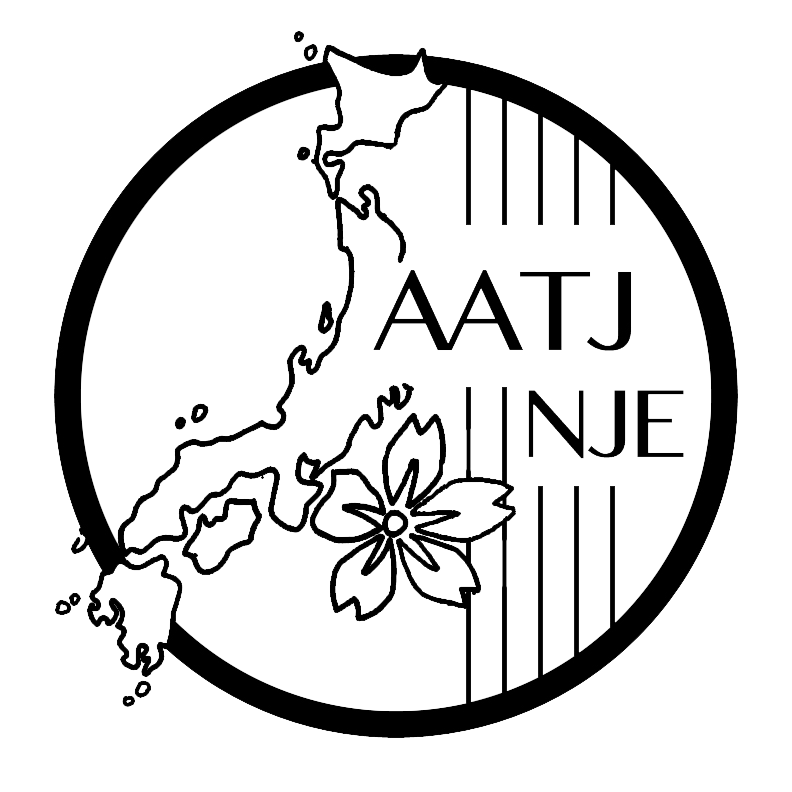NJE Guidelines
Here are the proficiency expectations and the content of the National Japanese Exam by levels. Sample questions will be available online shortly. If you have questions about the exam, please see our Frequently Asked Questions page.
Contents of this page:
Level 1: Reading
Level 1: Listening
Level 2: Reading
Level 2: Listening
Level 3: Reading
Level 3: Listening
| Level 1: Reading | |
| Proficiency Expectation: Students are able to correctly identify a number of highly contextualized words and phrases including cognates and borrowed words. Students can correctly recognize hiragana, katakana, and a very limited number of high-frequency Chinese characters. |
|
| Thematic and Cultural Areas | Text Types |
| For each of these areas, students should have a basic knowledge of Japanese cultural products and practices related to that area.
Self and Family |
Signs Lists Advertisements Announcements Email messages Schedules Maps Tickets Receipts |
| Level 1: Listening | |
| Proficiency Expectation: Students are able to correctly identify a number of high-frequency, highly contextualized words and phrases in very basic personal and social contexts with strong contextual or extralinguistic support. |
|
| Thematic and Cultural Areas | Text Types |
| For each of these areas, students should have a basic knowledge of Japanese cultural products and practices related to that area.
Self and Family |
Advertisements Short Conversations Simple Descriptions Daily Announcements Simple Instructions/Directions Phone messages Songs |
| Level 2: Reading | |
| Proficiency Expectation: Students are able to correctly identify the main idea and basic details when reading quasi-authentic, simple, word-level or short connected texts with strong contextual support. Students are able to read words written in hiragana, katakana, and kanji pertaining to a limited number of basic personal and social needs (see topics list). |
|
| Thematic and Cultural Areas | Text Types |
| For each of these areas, students should have a basic knowledge of Japanese cultural products and practices related to that area.
All areas for Level 1 exam, plus: |
Signs Lists Advertisements Announcements Schedules Email messages Short letters Text chats Web page screen shots Instructions, directions Menus Labels Haiku Postcards |
| Level 2: Listening | |
| Proficiency Expectation: Students are able to correctly identify the main idea and basic details when listening to quasi-authentic sentences or short connected audio texts spoken by sympathetic native speakers, with strong contextual support, pertaining to a limited number of basic personal and social needs (see topics list). |
|
| Thematic and Cultural Areas | Text Types |
| For each of these areas, students should have a basic knowledge of Japanese cultural products and practices related to that area.
All areas for Level 1 exam, plus: |
Conversations (in situations calling for formal speech) Descriptions Announcements Instructions/Directions Phone messages Songs Excerpts from television or radio broadcasts |
| Level 3: Reading | ||
| Proficiency Expectation: Students are able to correctly identify the main idea and basic details when reading quasi-authentic, longer connected texts at the sentence-level or more complex word-level with strong contextual support. Students are able to read words written in hiragana, katakana, and kanji pertaining to basic personal and social needs (see topics list). |
||
| Topic Areas | Text Types | |
| For each of these areas, students should have a basic knowledge of Japanese cultural products and practices related to that area.
All areas for Level 2 exam, plus: |
Signs Lists Advertisements Announcements Schedules Email messages Short letters Text chats Web page screen shots Instructions/directions Menus Labels Haiku Postcards Brochures |
Excerpts or passages from:
Magazine articles |
| Level 3: Listening | |
| Proficiency Expectation: Students are able to correctly identify the main idea and basic details when listening to quasi-authentic, longer sentences or connected audio texts, spoken by sympathetic native speakers, with strong contextual support, pertaining to basic personal and social needs (see topics list). | |
| Topic Areas | Text Types |
| For each of these areas, students should have a basic knowledge of Japanese cultural products and practices related to that area.
All areas for Level 2 exam, plus: |
Conversations (between equals or those of different ranks) Descriptions Announcements Instructions/Directions Phone messages Songs Excerpts from television or radio broadcasts |


